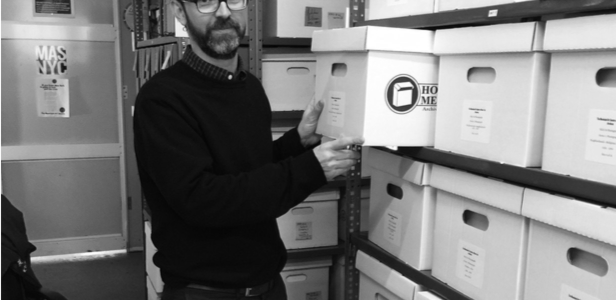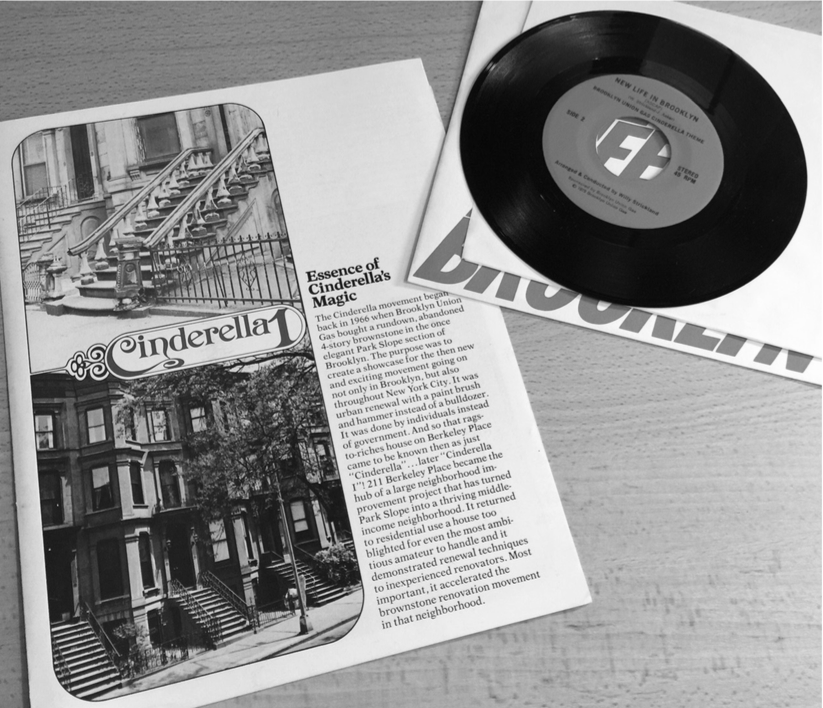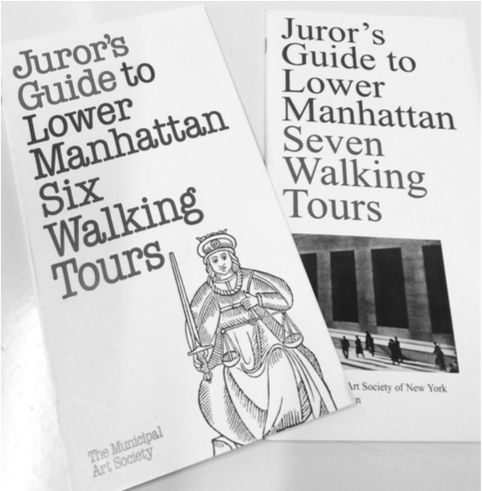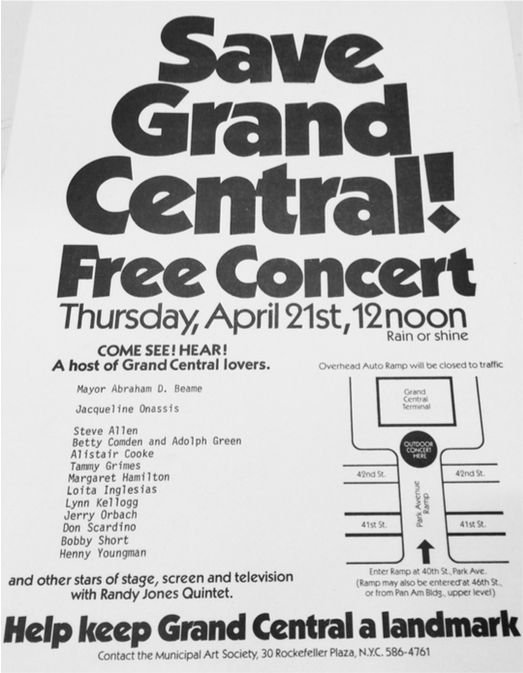
Municipal Art Society Enhances Its Collections
May 22, 2016 | by Elizabeth Rohn Jeffe, Vice-Chair
Article from the Spring 2016 Newsletter
The Municipal Art Society of New York (MAS), founded in 1893, has often been at the forefront of the movement to safeguard and promote the City’s historical and architectural legacy. Given MAS’s importance in civic affairs, it is not surprising that the organization possesses a wealth of archival materials that chronicle the long and rich story of MAS’s role in a plethora of preservation, architectural, and aesthetic initiatives in New York. Over the past 17 months, MAS has centralized and professionally organized its archival collections—a major undertaking that will be a boon to researchers.
In August 1980, following three years of planning and restoration, MAS opened The Urban Center in the landmarked Villard Houses at 455 Madison Avenue between 50th and 51st Streets. MAS shared The Urban Center with other civic organizations such as the New York Chapter of the American Institute of Architects, the Architectural League of New York, and the Parks Council. Over the next 30 years at this location, MAS presented exhibitions, panel discussions, lectures, and ran both a bookstore, appropriately named Urban Center Books, and The Information Exchange (TIE), a reference clearinghouse for architecture, preservation, community-based planning, and the built environment. Among the lasting legacies of TIE is an invaluable clipping and subject file collection now in the MAS Archives. At this time, MAS kept some of its older records offsite in a storage facility on East 110th Street but retained most of its collection at its offices. However,when MAS moved from the Villard Houses in 2010 to a smaller space in the old Steinway Hall building on West 57th Street, it became apparent that the Society needed considerably more offsite space to house its archival materials in their entirety. (MAS has since moved again and now occupies offices in the Look Building on Madison Avenue at 51st Street.)
With funding received from the Leon Levy Foundation in 2014, MAS rented a larger storage unit at the 110th Street facility and approached The Winthrop Group to assist with planning for and executing the assessment, organization, and cataloging of MAS’s archival records. Sam Markham, a senior consulting archivist at Winthrop—who formerly helped establish the Associated Press Corporate Archives—came on board in November 2014 along with processing archivist Cassandra Brewer to help MAS with this major project. In conjunction with full-time processing archivist Diane Dias De Fazio, who succeeded Brewer, Markham continues to be responsible for the MAS Archives while working with other Winthrop clients as well. He describes himself as “an archivist, not a preservationist,” and says that his time spent with the MAS collections has been a fascinating education in the Society’s evolution. “It was a new subject for me. I found myself asking, who are the players, and what are the pieces?” Having been able to examine the complete collection, Markham notes that “records help you observe how an organization changes in some ways and remains the same in others.” Indeed, the Archives attests to the transformation of MAS from a group with a “City Beautiful” focus to one concerned with all aspects of the City’s physical environment, from the preservation of its historical past to urban design and community-based planning.
Markham’s initial charge was to conduct an appraisal of the 650 boxes of materials in order to devise an overarching record group structure to organize the collections and create a processing plan for both the physical arrangement of materials and the preparation of access tools for researchers. In just under a year and a half, the Winthrop archivists have organized and rehoused materials in acid-free folders and created finding aids that provide information about the location, content, and significance of various collections. This spring, these finding aids for processed collections will be available online for researchers, first at ArchiveGrid.com and at a later date on the MAS website. Although it is hoped that portions of the collection will be digitized in the future, more funding will be required for this additional step.
The MAS Archives contains materials dating from the organization’s early days in the 1890s up until the present. Organized into 20 major record groups, the collection comprises an impressive variety of internal documents such as board and committee minutes and annual reports, MAS publications and newsletters, preservation and planning project records, public programs, exhibition and events materials, MAS testimony at public hearings, artifacts, photographs and slides, AV materials in a variety of formats (U-matic tapes, VHS, 16mm, etc.), and a significant collection of news clippings and subject files. The large number of photographs, slides, and printed materials connected to the “Save Grand Central” campaign, a major subject in the holdings, reflects the fact that MAS may be best known nationally as a driving force behind the successful legal challenge to save Grand Central Terminal. Penn Central wanted Marcel Breuer to build an office tower on top of Grand Central, and the ensuing court battles raged for years, with numerous decisions leading up to that of the Supreme Court in 1978 in favor of preserving the terminal. It was a cause in which MAS member Jacqueline Kennedy Onassis, who generally chose to guard her privacy, became publicly involved.
For those steeped in the history of preservation and architecture in New York, an especially important and rare resource in the MAS Archives is its Survey of Historic Buildings and Structures (1954- 1957), a series of one-page forms on which MAS members systematically documented the architectural history and importance of over 200 buildings and structures that were considered landmark worthy. The result of this three-year effort was the publication of New York Landmarks: Index of Architecturally Historic Structures in New York City in 1957. Alan Burnham and other MAS members expanded and reissued this index in three subsequent editions culminating in 1963 with the publication of Burnham’s famous New York Landmarks: A Study and Index of Architecturally Notable Structures in Greater New York, published by Wesleyan University Press under the auspices of the Municipal Art Society. Architectural historian Agnes Gilchrist was critical to the success of the Survey and was also an early proponent of MAS walking tours in the City begun in 1956. The MAS Archives contains scripts for the tour guides, related correspondence, and photographs of some of these early outings.Other fascinating holdings abound in the MAS Archives, including 23 episodes of the MAS radio show “The Livable City,” broadcast on WNYC between 1972 and 1979. The program dealt with such topics as “The Effect of the 2nd Avenue Subway on Street Life” (1973); “Rescuing 42nd Street” (1976); and “The Future of South Street” (1979). In handling this portion of the Archives, Markham reached out to WNYC Archivist Andy Lanset to create digital transfers of the reel-to-reel tapes for the MAS Archives. Other recordings that have been digitized include the 1971 MAS Annual Meeting at which Ada Louise Huxtable and then-U.S. Representative Ed Koch discussed “The State of the City” and a 1976 Lee Graham interview on WNYC with MAS Director Margot Wellington.
For those interested in how businesses and individuals can become partners in neighborhood preservation and revitalization, one particularly interesting group of items from the subject files of The Information Exchange relates to the Brooklyn Union Gas Company’s “Cinderella” campaign created in the 1960s to address the abandonment of homes and commercial buildings in deteriorating neighborhoods. As homeowners fled areas such as Park Slope, the Brooklyn Union Gas Company was watching its customer base flee as well, so the utility decided to fight for its own business survival by working for neighborhood rejuvenation. The company purchased an abandoned brownstone at 211 Berkeley Place in Park Slope for just $15,000 and completely renovated the house while respecting its Victorian details. Brooklyn Union created two apartments in the brownstone and used the building to demonstrate all the latest in gas-fueled appliances, heating, air conditioning, and even fireplaces. For years, the gas company worked together with the Park Slope Betterment Committee to transform the neighborhood, which over time became a model of revitalization and preservation.
The Archives also has numerous records reflecting MAS activities in more recent years including two collections of community outreach after the September 11th attacks: the “Imagine New York” project and the “Tribute in Light.” The “Imagine New York” initiative engaged people in over 200 workshops throughout the tri-state area to discuss their visions for rebuilding New York in the aftermath of the terrorist attacks. The “Tribute in Light” collection contains extensive documentation relating to the creation of the twin beams rising upwards at the site of the two towers of the World Trade Center as an act of remembrance and inspiration. Sponsored by MAS from 2002 until 2012, this program has since been presented annually by the 9/11 Memorial Museum.
For preservationists and researchers in New York City history, the organization and centralization of the MAS Archives is a very welcome development. Anthony C. Wood, founder and chair of the New York Preservation Archive Project, worked at MAS from 1981 to 1986. He is delighted that this important collection will be more accessible to scholars and preservationists, remarking that “it is wonderful to see such an outstanding archive organized so professionally—it’s a night-and-day difference from what it was years ago when I was going through random boxes for research for my book, Preserving New York: Winning the Right to Protect a City’s Landmarks.” Wood can still recall the difficulties of poring through unsorted boxes and piles of materials—and worrying about the ultimate fate of the important collections of MAS. Now, those materials so important to New York City architectural and preservation history will be protected and available for study by generations to come.
Above: Senior Consulting Archivist Sam Markham at the MAS Archives; Courtesy of MAS


